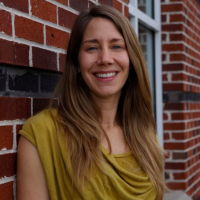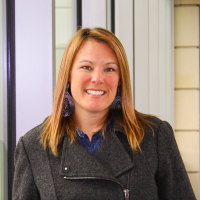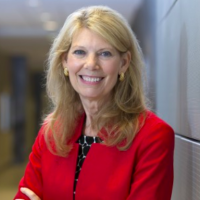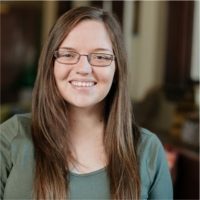How can databases help us track and measure community engagement and public service?
What indicators can serve as “pulse points” to help us understand, operationalize, and encourage reciprocity (as distinct from mutual benefit) within our partnerships and across our institutions?
These questions, among others, are central to understanding and working toward strengthening partnerships between institutions and our community partners. The role partners play in community engagement and public service activities can be examined as a key characteristic to understand and operationalize reciprocity in partnership work. Utilizing data within the University of North Carolina Greensboro’s and Indiana University-Purdue University Indianapolis’ Collaboratorys, the research team - Dr. Emily Janke, Dr. Kristin Norris, Dr. Terri Shelton, and Kristin Medlin - explored these questions and more, sharing insights during a webinar featuring peer-reviewed work first presented at the 2019 Assessment Institute, Coalition of Urban and Metropolitan Universities (CUMU), and International Association for Research on Service-Learning and Community Engagement (IARSLCE) conferences.
We are excited to share the work of two institutions coming together to use Collaboratory data and better understand how to deepen relationships with their community and consider ways to further partner development. Following the webinar we debriefed with the research team who shared their thoughts about operationalizing reciprocity in community engagement and public service activities.
Q: What are your motivations for this work?
Our research is motivated by our desire to better understand and measure mutual benefit and reciprocity to improve engaged practice. We want to explore what institutions are actually doing in/with community and how institutions and our partners operationalize true reciprocity. We realized that by identifying how we engage partners, we might better understand the barriers to enacting true reciprocity, and explore the factors associated with successful partnerships. If we want to assist scholars and practitioners strengthen their engagement, we first must know what reciprocity looks like under certain circumstances and what it requires. In order to advance institutional policies and practice on campuses and build capacity for both institutions and the field as a whole, we collectively must have a better understanding of what it means to be a truly engaged campus. In creating a common language of reciprocity and mutual benefit we can help institutions better understand and articulate their engagement and ultimately improve practice.
Q: How do you define community engagement and public service?
We utilize the Carnegie Foundation’s definition of community engagement which is expressed as “collaboration between institutions of higher education and their larger communities (local, regional/state, national, global) for the mutually beneficial exchange of knowledge and resources in a context of partnership and reciprocity.” (Carnegie Foundation, 2006).
We understand public service as that which might be a uni-directional, often times “expert” or “resource” model where university resources are extended to serve community individuals, groups, organizations and the public in general. Public service activities tend to focus on the delivery of expertise, resources, and services to community individuals, groups, organizations, and the public in general (Janke & Clayton, 2012).
While these definitions are widely used, we find that they do not adequately unpack the terms reciprocity and mutual benefit in a way that a practitioner would understand how to operationalize these concepts.
Q: How do you differentiate mutual benefit and reciprocity?
Mutual benefit is understood as a “win-win” agreement that focuses on outputs and outcomes. All partners must identify their expectations for what they each expect to get out of the partnership and then negotiate or communicate throughout the work about those expectations. The focus on the activity’s outputs and outcomes helps to identify the existence or level of mutual benefit. Outcomes correspond to the aims of the activity, while outputs are what was done to support the partnership’s desired outcomes. Mutual benefit is about win-win set ups and achievements, which can be an antecedent condition that is influenced through the partnership process.
Authentic reciprocity, however, focuses relentlessly on the process through which these outcomes and outputs are achieved. Reciprocity requires a continuous and intentional practice of valuing and drawing on the various forms of knowledge, resources and other assets that each person contributes to the shared activity and outcomes to a degree that the experience is felt by all to be equitable (adapted by Janke from Janke & Clayton, 2012). It is important to note that the level and type of involvement will change over time and according to phase, activity, purpose, and members.
Q: What does reciprocity in community partnerships look like? How can reciprocity be identified in community engagement and public service activities?
A reciprocal practice includes partners in collaborative conversations throughout all phases of the activity, including the development of ideas and plans to pursue jointly conceived efforts, the implementation of the activity, the analysis or interpretation of what was discovered or created, or the assessment of the project’s and partners’ shared efforts. Reciprocity demonstrates the value of the relationship, and the experiences of all partners are expressed by appropriate and relevant inclusion at key moments of the partnership, such as when decisions are being made about how to work together, who will do what, and assessments of how we know we are succeeding in our efforts along the way. In this way, reciprocity builds the hard to earn relationships and partnerships. Reciprocity is the enactment of our asset-based ethos.
Reciprocity is partly operationalized and identified through the role(s) that community organization(s) play in engagement and service activities. By analyzing the roles partners play in a single activity, we suggest that a level of reciprocity can be assigned to both a partnership and an activity. To determine the “level” of reciprocity present in any given activity or relationship, we can analyze the roles played by the partners within the activity.
Q: How are you using Collaboratory data to explore and measure the roles partners play in community engagement and public service activities?
For each community organization attached to an activity in Collaboratory, the faculty or staff member is asked about the partner’s role in planning, designing, implementing, or evaluating the activity. Articulating an organization’s role provides insights into interactions between community and the university. Collectively, our team has defined the specific partner roles identified in Collaboratory as having a high, medium, or low level of reciprocity, which we then used to assign Collaboratory activities as having high, medium, or low levels of reciprocity, based on the number and types of roles the partners played.
Drawing from published community engagement and public service activities within the UNCG and IUPUI Collaboratorys (469 unique activities that involved 659 unique community organizations and 3,824 community organization roles), we were able to identify levels of reciprocity for each activity. We were then able to construct a continuum of reciprocity where each point represents a specific activity that has a level of reciprocity that can be measured.
Q: What are the implications of your work for practice and future research?
We believe a deep, data-informed understanding of community partnerships can encourage administrators, scholars, and practitioners to revisit what it means to engage meaningfully with community and ultimately identify the motivations, outcomes, and processes that are guiding the work. As a field, we think it is important for institutions to consider the data they are collecting and whether or not it enables them to explore reciprocity and mutual benefit in ways that can improve partnerships. Our key question to the field: Is the data you’re collecting allowing your institution to explore the tactical and relational aspects of how partnerships actually work?
A big thank you to Dr. Emily Janke, Dr. Kristin Norris, Dr. Terri Shelton, and Kristin Medlin for the work they are doing to understand how Collaboratory data can inform higher education community engagement.
We look forward to hearing of ways you might use your Collaboratory data to answer questions and provide insight into your institution’s community engagement!
Meet Your Presenters:

Emily Janke, Ph.D. is a co-designer of Collaboratory, the founding director of the Institute for Community and Economic Engagement (ICEE) and an associate professor in the Peace and Conflict Studies department at UNC Greensboro. Dr. Janke has held key leadership roles to support the fair treatment of engaged scholarship in promotion and tenure policy and practices, track and monitor community engagement and public service, develop a university-wide website and Referral Desk to advance communication and potential for collaboration, and support department-level community engagement partnerships.

Kristin Norris, Ph.D. is the Director of Assessment for the Office of Community Engagement at IUPUI. Kristin works with stakeholders (internal and external) to track community-engaged activities to conduct assessment, evaluation, and research that transforms higher education and demonstrates how IUPUI’s community engaged activities (e.g., programs, pedagogies, research, initiatives) support the institutional mission, demonstrate progress toward the strategic plan, and inform decision making.

Terri Shelton, Ph.D. is the Vice Chancellor of Research and Engagement at UNC Greensboro. In her role she focuses on the advancement of research at the University and manages activities in the areas of research administration, research integrity, innovation and commercialization, and community and economic engagement. She also oversees interdisciplinary, campus-wide research. A quintessential feature of Shelton’s work is the bridging of research, policy, and evidence-based practice to create partnerships that build the capacity of communities, families and youth, service providers, researchers, and policymakers.

Kristin Medlin, MPA, MS is the Director of Research at Collaboratory, where she oversees research efforts to support, promote, and enhance the field of study related to community engagement and socially effective impact across all sectors. She is a co-designer of Collaboratory and previously served as the ICEE Communications & Partnerships Manager. Kristin’s scholarly work explores technology-assisted engagement, cross-sector partnerships, and tracking and assessment of community engagement.
References:
Carnegie Foundation for the Advancement of Teaching. (2006). Classification Description: Community Engagement Elective Classification.
Dostilio, L. D., Harrison, B., Brackmann, S. M., Kliewer, B. W., Edwards, K. E., & Clayton, P. H. (2012). Reciprocity: saying what we mean and meaning what we say. Michigan Journal of Community Service Learning, 19(1), 17+.
Janke, E. M., & Clayton, P. H. (2012). Excellence in Community Engagement and CommunityEngaged Scholarship: Advancing the Discourse at UNCG (Vol. 1). Greensboro, NC: University of North Carolina at Greensboro.
